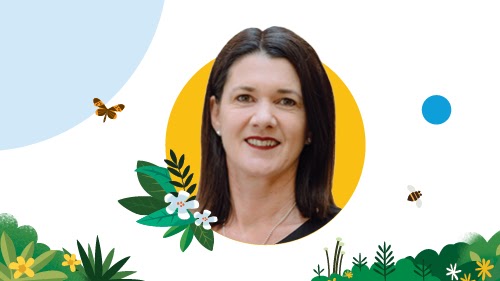
Get your FREE 30-day trial.
Start by selecting a product:
Last month at the B2B Marketing Leaders Forum in Sydney, I was hit by a striking statistic: 74 per cent of business-to-business (B2B) buyers now prefer online interactions to engaging a salesperson. We also know that for B2B buyers, 57 per cent of their decision is made before they even engage vendors’ salespeople. So this places a lot of emphasis on marketing. Does that mean to say this renders sales helpless and irrelevant, only required to issue paperwork?
Of course not, that’s ridiculous!
So then, what does it mean for sales? It does establish a gap between B2B customers’ expectations around interaction and sellers’ outdated sales methods. This gap must be bridged. The digital age is providing an opportunity for sales to connect to prospects and customers within a whole new medium, creating the engagement experience we always hoped for at long last.
Companies which are successfully growing sales in the digital era do three things well; they are:
Connected
Relevant, and
Personal.
Let’s look at three Australian customers doing this really well: Domain, the ASX and Roses Only:
1. Get Connected
We are in an age of hyper-connectivity. Everyone is connected, online and on our devices. It’s critical too that companies and sellers create a digital presence across the customer lifecycle. Don’t forget your audience is on a whole series of social channels. Your opportunity is to do the same. Aim to create a place where customers can feel part of a community, and ensure you invest in a customer relationship management (CRM) platform that lets customers interact with you easily online and connect customers to better information, faster. One organisation getting it right is the ASX who has connected its sales teams to each other and to their customers in a single cloud CRM platform. You can read about it here.
The ASX has created a self-service digital community for ASX business customers to manage their own accounts, log requests, notify ASX of any important changes which may affect investors and give feedback - all from the comfort of their living room/office/train. In the future ASX customers will be able to use the community based CRM to lodge compliance documents, download financial data, and conduct short selling transactions. Do you remember a time when all of this would have needed to happen in paper forms and phone calls? It’s not that long ago - how far we’ve come is thanks to digitally connected organisations like this one.
2. Be Relevant
Being relevant is key. When I look at my own interactions I see that I give up loads of data each day about what I want, when I want it and my expectations of how I want it. In return I expect sellers to interact with me using that information to add value. For instance, Country Road is where I buy a lot of my workwear. They record what I buy and make timely suggestions about discounts, new ranges and sales. Using my data very well, they only show me business items, as they know I go elsewhere for my leisure wear,Understand your customer’s sales data and bring the context to your point of sale (PoS). Again, you can do it too - investing in CRM and analytics gives you the capability learn about your customers’ habit and get predictive about them.
Another brand doing this well is Roses Only. It’s delivering customer insights like previous history, preferences and timing directly into the sales cycle - thus increasing the opportunity for sales. It also means they have cut down the amount of time spent on admin by 20 per cent, which in turn is allowing teams to spend more time understanding customers’ precise needs. Salesforce helps to automatically capture the data around all of these interactions, and surfaces new intelligence gained on the next engagement. It’s an ideal model for repeat business. You can read about this story here.
3. Personalise
Finally, you need to understand your customers’ buyer journey and build 1:1 personalised experiences. What is a 1:1 personalised customer journey and how can you create one? Within this relationship consumers give up their data to companies in return for something of value that is relevant to the individual. Marketing automation is helping companies to deepen their relationships by creating 1-to-1 customer journeys across every customer touchpoint. The real estate business is an industry that hasn’t changed for twenty years, and most agents still use clipboards and pens. Domain is connecting agents and customers in mobile apps that give them real time data around house viewings on their mobile phones. For example, if a customer checks into an open house on the way to see it, the agent not only knows exactly whom to expect at the door but what they are looking for, what they have viewed in the past, etc. What do you think that does to the agent's ability to find them their dream home? And, even more than that, the strategic positioning of beacons has the ability to push open house notifications to Domain.com.au customers, enticing them in. It also lets the agents know when they showed up but didn't come inside, because that's just as important a piece of data as what did happen. The potential for 1:1 customer service is almost infinite with real time, mobile data insights in your hands.
Well worth watching this video here:
These are only three examples of companies taking the opportunity to create sales relationships with their target customers outside of - and sometimes long before - the sales meeting. So, instead of looking at this growing trend for people to replace the salesperson with a Google landing page, why not jump on the digital train to better sales interactions…and many more of them.